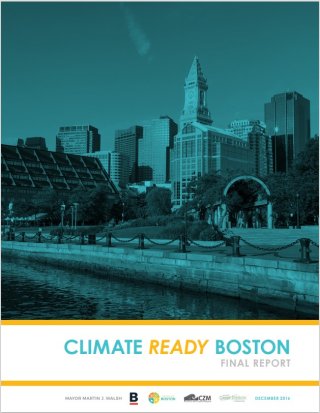The City of Boston Plans for Resilience

In 2007, Boston’s Mayor directed each city department to assess their risks and vulnerabilities from changing environmental conditions.
In the subsequent years Boston developed a report “Climate Ready Boston - Municipal Vulnerability to Climate Change,” that anticipates hazards and impacts and associated vulnerabilities to the city of Boston.
The Climate Ready Boston Adaptation Plan projects how changes in the environment are expected to lead to impacts ranging from sea-level rise to an increase in disaster events. The report utilized existing research and analysis to identify potential municipal infrastructure and other city services that could be at risk.
Boston used the knowledge gained from Climate Ready Boston to integrate the risks and vulnerabilities within their Natural Hazard Mitigation Plan.
- Climate Ready Boston: Final Report (PDF) (199 pp, 176 MB, About PDF)
| How Did They Do It? | Applicable EPA Tools |
|---|---|
Mayor issued an Executive Order to identify and plan to reduce risks.
| The National Climate Assessment Regional and Local Government Climate Adaptation Training can help you identify regional risks and how they may impact local community services. |
City departments conducted vulnerability assessments.
| The Climate Change Adaptation Workbook can help community organizations that manage environmental resources prepare a broad, risk-based adaptation plan. |
Boston used vulnerability assessment tools to inform community plans.
| View the U.S. Climate Resilience Toolkit to learn more about how VCAPS was utilized in historical projects and other tools to help communities integrate vulnerabilities into community plans. |
Similar Cases and More Information
Determining risks and vulnerabilities are just the first step to preparedness and resiliency. Communities also need to identify and employ adaptation strategies as well. To see how Boston adapted its wastewater treatment facility to sea-level rise, view the Deer Island example.
